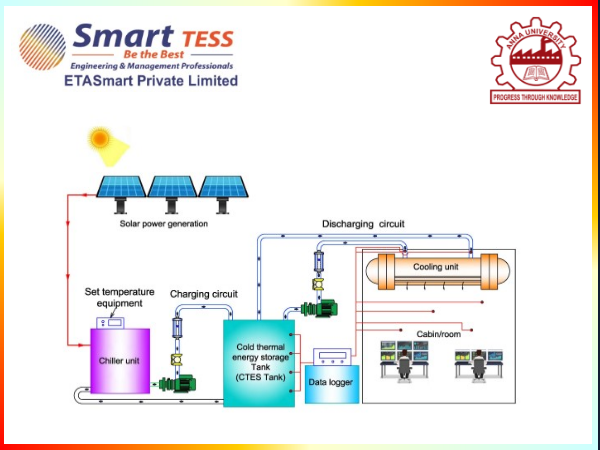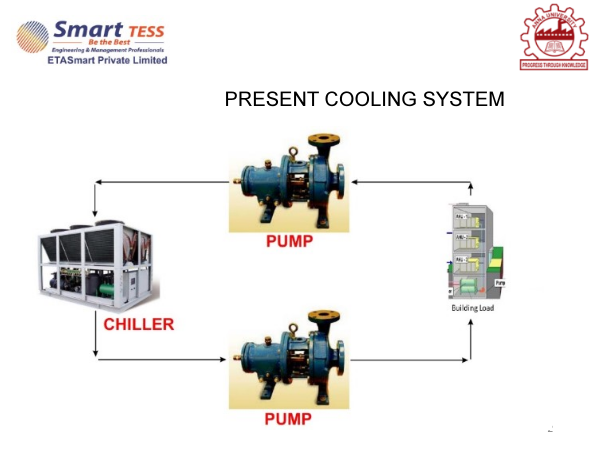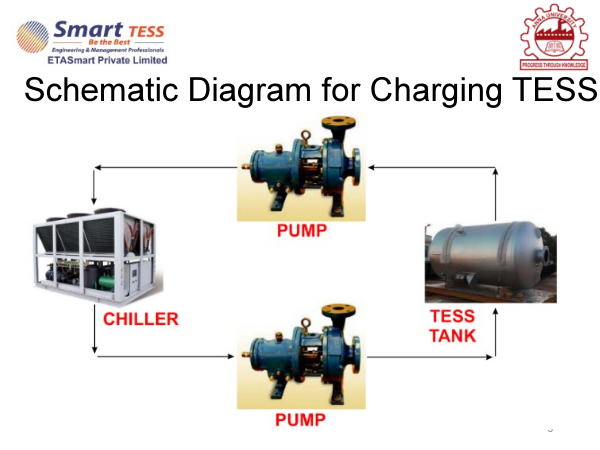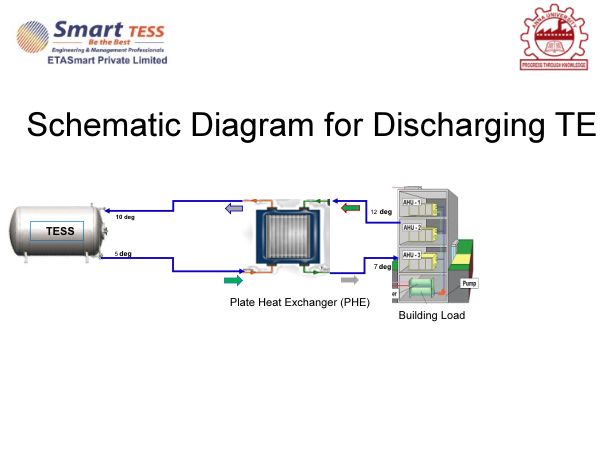About
Cool Storage Integrated with Chiller Unit for Efficient Utilisation of Solar Energy
In any Highrise buildings located in hot countries like India, more than 50% of the energy is spent on air conditioning. Further the energy consumption by the building sector in most of the developing and developed nations is nearly 40% of the total energy produced. Thus, these countries located near the equator spend nearly 20% of the total power generated for air-conditioning. Hence the energy-intensive air conditioning is an important sector, for energy efficiency, building demand-side management, and for the introduction of solar energy in a large way.

The air conditioning loads for a given building vary diurnally with the highest demand for cooling typically occurring during the mid to late-afternoon periods and lowest cooling demand at night-time. Accordingly, the chiller capacity is designed to meet the peak load demand, and hence, the capacity of the chiller is usually more than twice the average load requirement.
Over the years, the dynamic retail electricity tariffs have been applied in varying forms around the globe, particularly for commercial and industrial consumers.
Under the above scenario cool thermal storage systems (CTSS) are introduced in the building air-conditioning between the chiller and the air handling units to reduce the maximum demand capacity of the chiller.
The basic concept of CTES is to enable the operation of energy-intensive chilling/refrigeration equipment during periods of time when utility costs and cooling loads are low in order to charge a storage system (a “Thermal Battery”).
The stored thermal energy can then be utilized during the Peak hours to meet the cooling Loads. CTES system is also an economically viable solution for space cooling applications.
In recent years, there is also an extensive promotion for installation of solar PV system in the commercial sectors. The air-conditioning requirement in the commercial sectors matches with the availability of solar energy. Hence, free energy from the sun can be utilised to operate the chiller to charge the CTES tank.
As per the Tamilnadu EB norms the Energy generated from solar energy through on grid system cannot be adjusted during peak hours for utilisation. Hence, the energy pumped to the grid can be utilised to produce cool energy during the Off peak hours and the same can be stored in the Cool Thermal Storage System and the same can be utilized at any point of time.
Considering the above said technical and tariff benefits, there is a good economics towards the integration of CTES system with the chiller.
The brine supplied to the Storge tank should be at the temperature of -5℃ from Chiller. Though the electricity consumption involved in reducing the brine temperature to -5℃, compared to the chiller system without cool storage system, where in the chilled temperature is due to the integration of cool thermal is very high as summarised below:
When the grid electricity is used:
- 25% reduction in tariff between peak hour and off-peak hour operation (4 hrs peak hour (6 PM to 10 PM) operation can be curtailed)
- The chiller is energy efficient when it is operated during the night-time for charging because the ambient temp is low (The condenser in the chiller system works at least 5℃ leaser compared to the conventional system against the ambient condition.
- Possible to reduce the demand charges appreciably.
- The compressor operation is always under full load conditions.
When the Solar Power is used:
- Cost of the electricity is reduced by more than 30% compared to the cost of electricity obtained from TNGEDCO in addition to the benefits due to demand charges reduction and full load operation






